Emotion In Practice
- @emotion/core
- @emotion/styled
- emotion
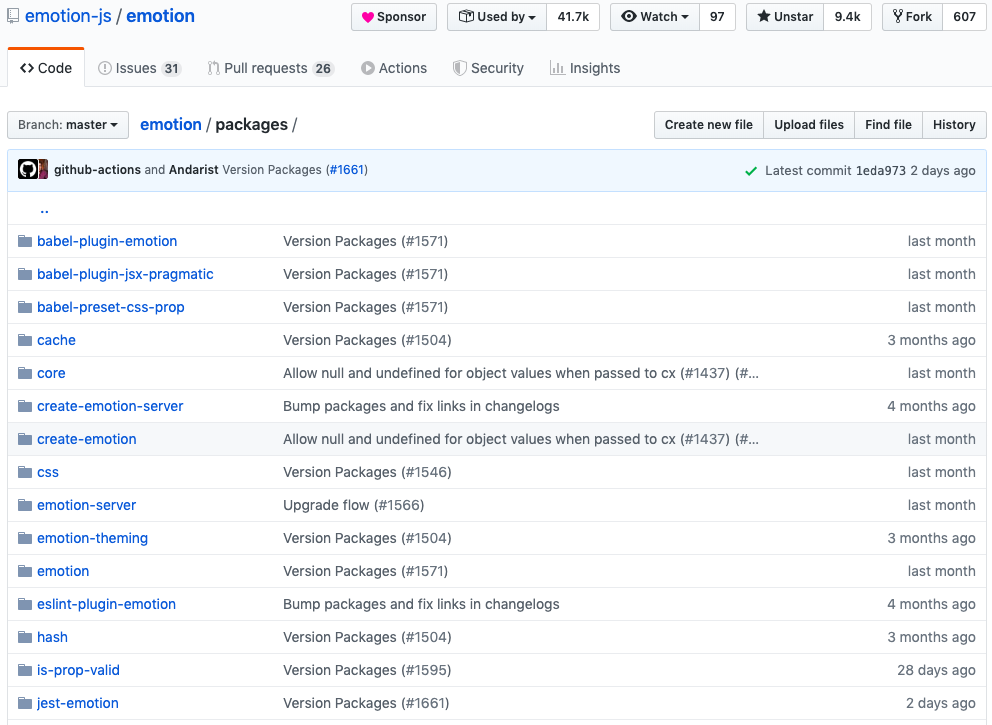
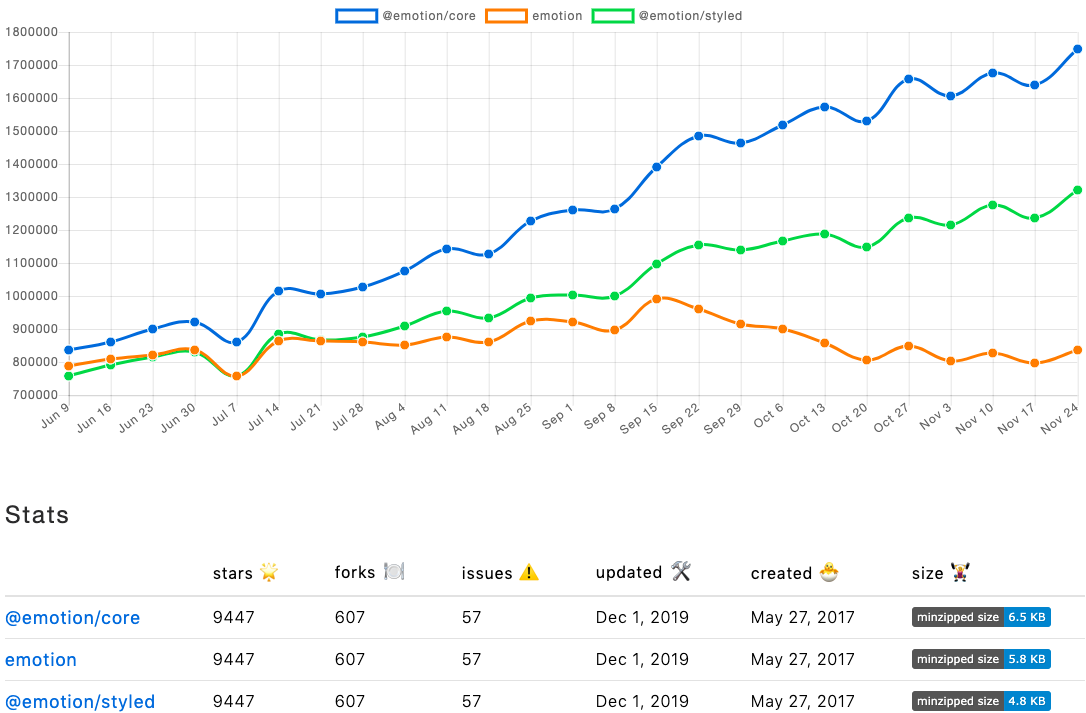
@emotion/core
@emotion/styled
emotion
6.5KB
4.8KB
5.8KB
@emotion/core
/** @jsx jsx */
import { jsx, css } from '@emotion/core';
const styles = {
camelCase: {
display: 'flex',
alignItems: 'flex-start',
},
origin: css`
display: flex;
align-items: flex-start;
`,
};
function Example() {
return (
<div
css={[
styles.camelCase,
styles.origin,
]} />
);
}emotion
import React from 'react';
import { css, cx } from 'emotion';
const classes = {
origin: css`
display: flex;
align-items: flex-start;
`,
compose: css`
justify-content: flex-start;
`,
};
function Example() {
return (
<div className={cx(classes.origin, classes.compose)} />
);
}@emotion/styled
import React from 'react';
import styled from '@emotion/styled';
const Wrapper = styled.div`
display: flex;
align-items: flex-start;
justify-content: ${({ center }) => (center ? 'center' : 'flex-start')};
`;
function Example() {
return (
<Wrapper center />
);
}Why not using styled-component ?
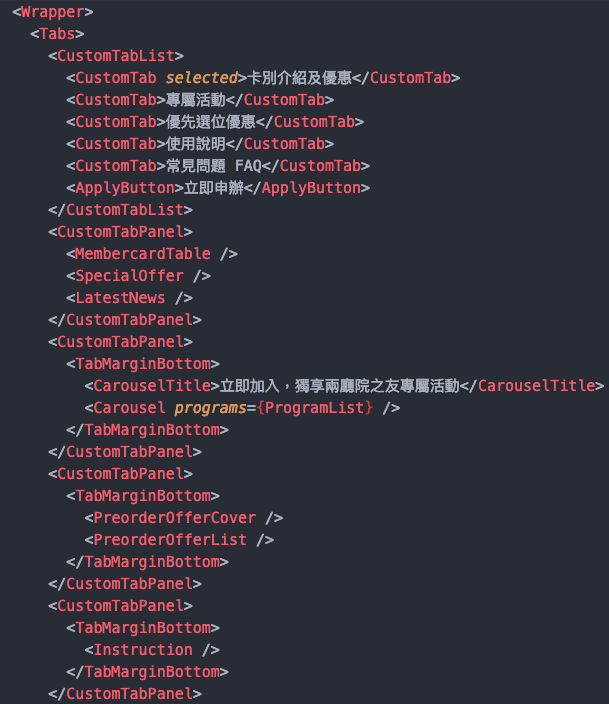
- Styled-component
- Your components
- Library components
Why not using styled-component ?
const Paragraph = styled.p`
font-size: 16px;
font-weight: 300;
color: #1a1a1a;
letter-spacing: 1.5px;
line-height: 29px;
`;
function Example() {
return (
<Paragraph as="span">
Lorem ipsum dolor sit amet,
consectetur adipiscing elit,
</Paragraph>
);
}
<p> should have default margin
Why not using styled-component ?
const Button = styled.button`
// button styles
`;
function Example() {
return (
<Button>
Click me!
</Button>
);
}
eslint will not tell you
"Missing an explicit type attribute for button"
@emotion/core
- The “@emotion/core” package requires React and is recommended for users of that framework if possible.
- Server side rendering with zero configuration.
emotion
- The emotion package is framework agnostic and the simplest way to use Emotion.
- Server side rendering requires additional work to set up
React Dev tool
@emotion/styled
React Dev tool
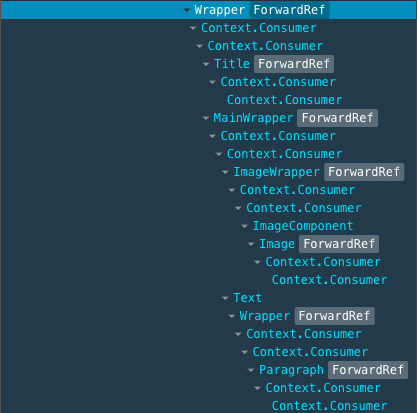
@emotion/core
React Dev tool
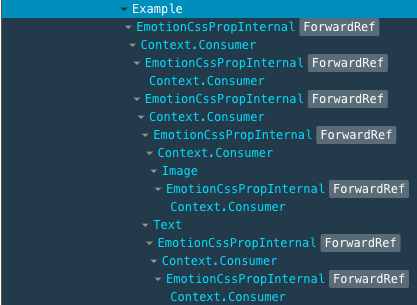
emotion
React Dev tool

camel case v.s. kebab case
const styles = {
wrapper: {
fontSize: 16,
fontWeight: 300,
':hover': {
},
},
};const styles = {
wrapper: css`
font-size: 16px;
font-weight: 300;
&:hover {
}
`,
};:after
:before
:hover
:hover #element
:last-child
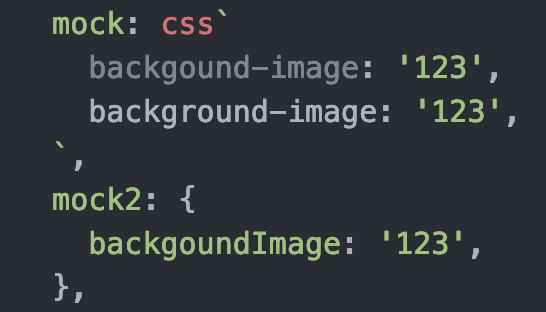
radium ?
...
style composing
const activeWrapper = css`
border-top: 1px solid #1a1a1a;
`;
const classes = {
wrapper: isActive => css`
font-size: 16px;
font-weight: 300;
cursor: pointer;
${isActive ? activeWrapper : null};
&:hover {
${activeWrapper};
}
`,
};
function Example() {
const [isActive, setActive] = useState(false);
return (
<div className={classes.wrapper(isActive)} />
);
}
const styles = {
wrapper: {
fontSize: 16,
fontWeight: 300,
cursor: pointer,
':hover': {
borderTop: 1px solid #1a1a1a,
},
},
...
...
activeWrapper: {
borderTop: 1px solid #1a1a1a,
},
};
function Example() {
const [isActive, setActive] = useState(false);
return (
<div
css={[
styles.wrapper,
isActive && styles.activeWrapper,
]} />
);
}
Summary
html tag + css = styled-component
= @emotion/styled
Thanks
Emotion In Practice
By Travor Lee
Emotion In Practice
- 327



